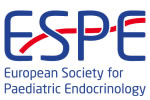hrp0082p3-d3-655 | Autoimmune Endocrine Disease | ESPE2014
A Conservative Approach to the Management of Endocrine Neoplasia in Carney Complex in an Adolescent Male
Frerichs Carley , Didi Mohammed , Abernethy Laurence , Kenny Simon , Ellis Ian , Blair Joanne
hrp0082p2-d1-287 | Bone | ESPE2014
Case report: A Novel mutation in the Calcium Sensing Receptor in a Welsh Family with Hypercalcaemia
Soni Astha , Frerichs Carley , Ramakrishnan Renuka , Dharmaraj Poonam
hrp0082p2-d3-510 | Perinatal and Neonatal Endocrinology | ESPE2014
Neonates with Acute Kidney Injury Continue to be at Risk of Iatrogenic Iodine Toxicity and Hypothyroidism with Attendant Risk to the Developing Brain
Frerichs Carley , Holt Richard , Morgan Henry , Jones Caroline , Didi Mohammed
hrp0082p3-d2-682 | Bone (1) | ESPE2014
Cautionary Tales in the Management of Transient Neonatal Hypoparathyroidism
Mulvey Ian Robert , Frerichs Carley , Dharmaraj Poonam , Ramakrishnan Renuka
hrp0086p1-p371 | Gonads & DSD P1 | ESPE2016
Androgen Profile Differs to Adults in Adolescent Girls with Polycystic Ovary Syndrome
Frerichs Carley , Das Urmi , Garden Ann , Williams Cara , Dharmaraj Poonam , Didi Mohammed , Ramakrishnan Renuka , Blair Jo
hrp0086p1-p828 | Syndromes: Mechanisms and Management P1 | ESPE2016
A Study of Bone Health Index (BHI) in Girls with Turners Syndrome
Frerichs Carley , Jenkinson Carly , Povall Anne , Abernethy Laurence , Das Urmi , Ramakrishnan Renuka , Senniappan Senthil , Didi Mohammed , Blair Jo
hrp0097p2-193 | Adrenals and HPA Axis | ESPE2023
Patient with Carney complex syndrome due to PRKAR1A mutation.
Ioannis-Anargyros Vasilakis , Barouti Konstantina , Sertedaki Amalia , Giannopoulou Effrosyni , Markopoulou Panagiota , Zosi Paraskevi , Lykopoulou Evangelia , Christopoulos Nikolaos , N. Zografos George , Valari Manthoula , Stefanaki Kalliopi , A. Stratakis Constantine , Charmandari Evangelia , Kanaka- Gantenbein Christina
hrp0095p1-139 | Multisystem Endocrine Disorders | ESPE2022
“Cushing’s syndrome in a girl with Carney Complex: a case report”
Rivetti Giulio , Caterina Luongo , Aiello Francesca , Miraglia Del Giudice Emanuele , Marzuillo Pierluigi , Di Iorio Giovanni , Pellino Valeria , Grandone Anna
hrp0097lb4 | Late Breaking | ESPE2023
A novel variant in PRKAR1A at the exon-intron border leads to aberrant splicing in patients affected by carney complex.
Grosse Martin , Abicht Angela , Gebhard Christian , Grasemann Corinna , Kiewert Cordula , Unger Nicole , Weber Frank , Bierkamp-Christophersen Dirk , J Kaiser Frank , Munteanu Martin
hrp0097p2-157 | Adrenals and HPA Axis | ESPE2023
ACTH-independent hypercortisolemia: onset clinical picture in a 10-year-old boy with Carney complex
Lugarà Cecilia , Bertherat Jerome , Aversa Tommaso , Pasmant Eric , Valenzise Mariella , Pepe Giorgia , Ferraù Francesco , Cannavò Salvatore , Wasniewska Malgorzata , Corica Domenico



